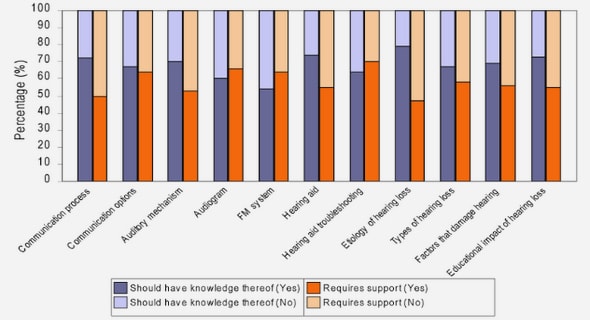(Downloads - 0)
For more info about our services contact : help@bestpfe.com
Table of contents
Chapter I Review of Literature on Odor Perception
1.1 Olfactory System
1.1.1 Olfactory Epithelium
1.1.2 Olfactory Bulb
1.1.3 Olfactory Cortex
1.2 Dimensions of Odors
1.2.1 Odor Intensity
1.2.2 Odor Pleasantness
1.2.3 Odor Quality
1.3 Odor Mixtures
1.3.1 Perception of Odor Mixtures
1.3.2 Interactions Occurred at Different Stages of the Olfactory System
1.4 Research Progress Related to Olfactory Perceptual Interactions
1.4.1 Perceptual Interactions between Odorants Observed in Foods and Beverages
1.4.2 Methodologies Involved in Research Related to Odor Mixture Interactions
Chapter II Review of Literature on Aroma of Icewine
2.1 Introduction
2.2 Uniqueness of Icewine and Its Aromas
2.3 Origin of Icewine Aromas
2.4 Factors Affecting the Primary Aromas of Icewine
2.4.1 Grape-growing Environment
2.4.2 Grape Varieties
2.4.3 Dehydration and Freeze-thaw Cycles in Icewine
2.4.4 Harvest
2.4.5 Other Vineyard Management
2.4.6 Healthy Grape-growing Condition
2.5 Factors Affecting the Secondary Aromas of Icewine
2.5.1 Pressing
2.5.2 Yeast and Fermentations
2.6 Factors Affecting the Tertiary Aromas of Icewine
2.7 Conclusions and Perspectives
Chapter III Characterization of the Key Aroma Compounds in Chinese Vidal Icewine
3.1 Introduction
3.2 Materials and Methods
3.2.1 Chemicals
3.2.2 Icewine Samples
3.2.3 Aroma Extraction Methods
3.2.4 Gas Chromatography-Olfactometry and Gas Chromatography Mass Spectrometric Analysis
3.2.5 Aroma Extract Dilution Analysis
3.2.6 Aroma Identification and Quantitation
3.2.7 Aroma Recombination of Icewine by Descriptive Analysis
3.2.8 Aroma Omission Test by Discrimination Analysis
3.3 Results and Discussions
3.3.1 Odor-active Compounds Identification of Icewine
3.3.2 Quantitative Analysis in Yellow Label Icewine
3.3.3 Aroma Recombination and Omission Experiments
3.4 Conclusions
Chapter IV The Contribution of Aroma Compounds in Icewine Considering Odor Mixture-Induced Interactions
4.1 Introduction
4.2 Materials and Methods
4.2.1 Samples
4.2.2 Chemicals
4.2.3 Aroma Extraction Methods
4.2.4 Gas Chromatography−Olfactometry (GC-O) and Olfactoscan Analysis Conditions
4.2.5 Subjects
4.2.6 Gas Chromatography-Olfactometry and Olfactoscan Analysis
4.2.7 Data Process for Detection Frequency (DF) Method
4.2.8 Identification of the Impact Compounds
4.2.9 Data Analysis
4.3 Results and Discussions
4.3.1 Odor Zone Defined in GC-O and Olfactoscan Analysis by the Detection Frequency (DF) Method
4.3.2 Peak Identification and Odor-active Compound Contribution in GC-O and Olfactoscan Analysis
4.3.3 Mixture-induced Effect of Icewine Background Odor on the Detection and Identification of Odor-active Compounds
4.3.4 General Discussion
4.4 Conclusions
Chapter V Factors Influencing the Perception of Odor Mixtures in Icewine
5.1 Introduction
5.2 Materials and Methods
5.2.1 Chemicals and Samples
5.2.2 Stimuli and Delivery Apparatus
5.2.3 Subjects
5.2.4 Experimental Procedure
5.2.5 Rate-All-That-Apply (RATA) Procedure
5.2.6 Data Processing
5.3 Results and Discussions
5.3.1 Sensory Data Quality Assessment
5.3.2 Influence of the Addition of Single Odorants on the Perception of Icewine Odor
5.3.3 Influence of the Combined Addition of Odorants on the Perception of Icewine Odor
5.3.4 Odor Perception of Binary Odor Mixtures Composed of the 11 Key Odorants
5.3.5 General Discussion
5.4 Conclusions
Chapter VI General Law of Olfactory Interaction in Binary Odor Mixtures
6.1 Introduction
6.2 Materials and Methods
6.2.1 Subjects
6.2.2 Stimuli
6.2.3 Sample Preparation
6.2.4 General Procedures
6.2.5 Data Processing
6.3 Results and Discussions
6.3.1 Panel Performance and Repeatability
6.3.2 Intensity and Pleasantness of the 72 Odorants (dataset II)
6.3.3 Perception of Components’ Odor within Mixtures (dataset I)
6.3.4 Overall Intensity of Binary Mixtures (dataset I)
6.3.5 Binary OdorPleasantness Perception (dataset II)
6.3.6 Pleasantness Prediction (dataset II)
6.3.7 General Discussion
6.4 Conclusions
Chapter VII General Discussion and Perspective
7.1 Odor-active Compounds in Icewine and Their Contribution to Icewine Aroma
7.1.1 Icewine Odor-active Compounds Identification
7.1.2 The Contribution of Single Odorants to Icewine Aroma
7.1.3 The Contribution of Different Odorant Combinations to Icewine Aroma
7.2 The Perception of Odor Mixtures
7.2.1 Elemental Coding or Configural Coding
7.2.2 Separation Processing or Completion Processing
7.2.3 Olfactory Perceptual Interactions
7.3 Experimental Design and Methodologies in the Research on Olfactory Perceptual Interactions
7.4 General Perspectives




